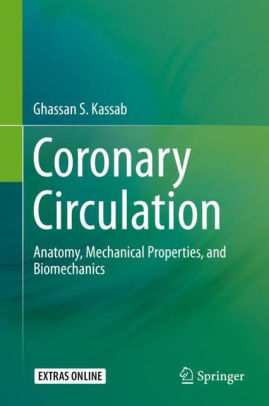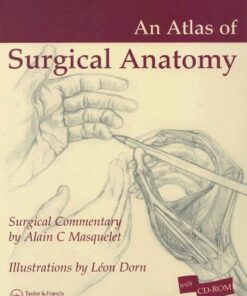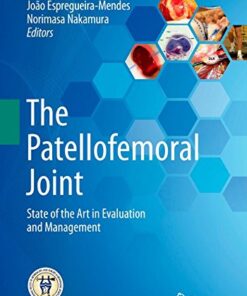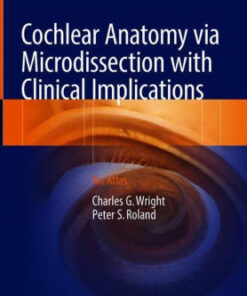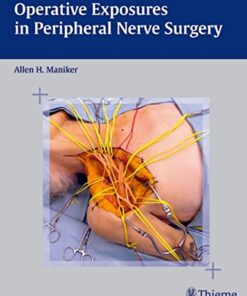(eBook) Coronary Circulation – Anatomy, Mechanical Properties by Kassab
$22.00
Download instantly Coronary Circulation – Anatomy, Mechanical Properties, and Biomechanics by Ghassan S. Kassab. It is ebook in PDF format.
ISBN-10: 3030148173 ISBN-13: 9783030148171
Preview
This is the PDF eBook version for Coronary Circulation – Anatomy, Mechanical Properties, and Biomechanics by Ghassan S. Kassab
Table of Contents
Preface
Overview, Scope, Goal of Book, Acknowledgments
Chapter 1: Biomechanics
1.1 Introduction
1.2 Basic Terminology in Biomechanics
Stress,
Strain
Compliance, Stiffness, Distensibility, and Young’s Modulus,
Viscoelasticity
1.3 Approach
1.4 Structure and Geometry
1.5 Material Properties
1.6 Laws of Mechanics
1.7 Boundary Conditions
1.8 Boundary Value Problems
1.9 Solution of Boundary Value Problems
Computational Fluid Dynamics
Finite Element Method, Fluid-Structure Interaction
ALE Formulation for Fluid-Structure-Interaction
Immersed Boundary (IB) Method
Chapter 2: Morphometry of Coronary Vasculature
2.1 Introduction
2. 2 Coronary Vasculature
2.3 Reduction of Coronary Vasculature
Casting Material
Animal and Isolated Heart Preparation
Polymer Cast of Coronary Vasculature
Histological and Cast Specimens
Morphometric Measurements
Diameter-Defined Strahler System
Meshing of Histological and Cast Data
Segments and Elements
Connectivity Matrix
Longitudinal Position Matrix
Asymmetry Ratios
Counting Total Number of Elements
Arcade-Like Vessels: Epicardial Veins
Network-Like Vessels: Capillaries
Diameters and Lengths of Capillary Segments
Topology of Arteriolar and Venular Zones and Mean Functional Capillary Length
2. 4 Integration of 3D Coronary Vasculature
Node to Node Computer Reconstruction of Coronary Network
Anatomical Input Files
Statistical 3D Reconstruction of Coronary Vasculature
Existing database and Additional Assumptions
Reconstruction Approach
Geometric Optimization
Verification of Coronary Network
2.5 Non-Tree Structures
2.6 Labor Savings in Morphological Reconstruction
2.7 Automation: Segmentation and Centerline Detection
Image Processing
Segmentation of Vessel Boundary
Segmentation under Topological Control
Centerline Detection
Vector Field
Determination of the Centerlines
Geometric Reconstruction
2.8 Grid Generation
Element Quality
2.9 Visualization of Reconstructed Network
2.10 Patient Specific Coronary Morphometry
Chapter 3: Mechanical Properties and Microstructure of the Coronary Vasculature
3.1 Introduction
3.2 Compliance, Distensibility, and Stiffness
Epicardial Arteries
Capillaries
3.3 Effect of Surrounding Tissue: Radial Constraint and Tethering
Pressure-Cross Sectional Area Relation
Pressure-Volume Relation
Slackness between Vessels and Myocardium
3.4 Zero-Stress State
Circumferential Residual Strain
Longitudinal Distribution of Mean Stress and Strain
Transmural Wall Strain Distribution
Effect of No-Load Duration on Opening Angle
Effect of Osmolarity on Zero-Stress State
Axial Residual Strain
3.5 Tri-axial Testing of Coronary Arteries
Two-Layer Model
3.6 Active Mechanical Properties
Isovolumic Myography
3.7 Ultrastructure of Coronary Arteries
Intima
Media
Adventitia
Collagen and Elastin
Ground Substance
Histology
Multi-Photon Microscopy
Morphometry of coronary adventitia
Simultaneous mechanical loading-imaging
Morphometry of elastin and collagen fibers at no-distension state
In situ deformation of elastin and collagen fibers
Morphometry of coronary Media
Automation of Smooth Muscle Cell Measurements
In situ deformation of Smooth Muscle Cells
Chapter 4: Constitutive Models of Coronary Vasculature
4.1 Introduction
4.2 Phenomenological Constitutive Models
Shear Modulus
Incremental Moduli
Strain Energy Function (SEF)
2D and 3D SEF Fung Model
Bilinear Model – Generalized Hooke’s Law
Shear Modulus
Incompressibility Condition
Linear Viscoelasticity and Maxwell’s Model
Artery
Opening Angle
Active Properties
4.3 Microstructure-based Constitutive models
Comparison of microstructural models
4.4 Microstructural models of Coronary Artery
Adventitia
Uniform field models – Behavior of Ground Substance
3D Microstructural model of coronary adventitia
Media
Integrated 3D Model of Coronary Artery Wall
Case I
Case II
Case III
Chapter 5: Network Analysis of Coronary Circulation: I. Steady State Flow
5.1 Introduction
5.2 Steady State Coronary Blood Flow
Longitudinal Pressure and Flow Distributions
Coronary Arterial Tree Model: Statistical Connectivity
Coronary Arterial Tree Model: Node-to-Node Connectivity
Spatial Heterogeneity of Coronary Flow
Steady Flow Analysis in a 3D Coronary Arterial Model
Flow Heterogeneity with Fractal Nature
Role of Vascular Compliance
Pressure-Flow Relation in Single Coronary Artery
Role of Compliance and Blood Rheology on Pressure-Flow Relation in Entire Coronary Arterial Tree
Capillary Network Flow Analysis
Venous Network Flow Analysis
5.3 Structure-Function Relation
Transition from “Distributing” to “Delivering” Vessels
Transition from “Conduction” to “Transport”
Possible Mechanisms for Functional Hierarchy
Significance of Functional Hierarchy
Chapter 6: Network Analysis of Coronary Circulation: II. Pulsatile Flow
6.1 Introduction
6.2 Pulsatile Flow in Coronary Vasculature
Pulsatile Flow Experiments in Passive Hearts
Womersley-Type Model
Low Frequency Flow Model Compared with Steady-State Flow
Experimental Validation of Womersley ModelEffect of Various Parameters (e.g., Wave Frequency, Branching Asymmetry, etc.) on Pulsatile Blood Flow
Hybrid One-Dimensional/Womersley Model
Pressure Boundary Conditions at the Inlet of LAD and LCx Arteries
Effect of Energy Loss at Bifurcation
6.3 Myocardial-Vessel Interaction Flow
Models of Coronary Vasculature
Intramyocardial Pressure (IMP)
Lumped Models
Distributive Models
Vessel Elasticity
MVI Model
Anatomical Model
Single Vessel Flow Model
Network Flow Model
Model Predictions
Phasic Changes
Test of MVI Mechanisms
6.4 Coronary Flow Regulation
Coronary Autoregulation
Models of Autoregulation
Perfusion Dispersion
Transmural Perfusion Heterogeneity
Metabolic Flow Reserve (MFR)
Effect of Regulation on the Coronary Flow
Model Predictions
Effect of MVI
Model Sensitivity
Myogenic sensitivity
Shear Sensitivity
Metabolic Sensitivity
Order Dependence of the Metabolic Diameter Regulation
Model Validations
Novel Model Predictions
Chapter 7: Scaling Laws of Coronary Vasculature
7.1 Introduction
7.2 Murray’s Law
7.3 Zhou, Kassab, and Molloi ZKM Model
Validation of ZKM Model
Experimental Validations
Computational Validations
7.4 Validation of Scaling Laws in Other Vascular Trees
Optimal Power Dissipation
Vascular Metabolic Dissipation of Blood Vessel Wall
7.5 Scaling Law of Flow Resistance
7.6 Scaling of Myocardial Mass
7.7 Scaling Law of Vascular Blood Volume
Comparison with ZKM Model
7.8 Scaling laws of flow rate, vessel blood volume, vascular lengths, and transit times with number of capillaries
Flow Scales with Capillary Numbers
Crown Volume Scales with Capillary Number
Crown Length Scales with Capillary Number
Transit Time Scales with Crown Volume and Length
7.9 Other Design Features of Vascular Trees
7.10 Fractal Description of Branching Pattern
7.11 Intraspecific Scaling Laws of Vascular Trees
7.12 Constructal Law
Chapter 8: Local Coronary Flow and Stress Distribution
8.1 Introduction
8.2 Local Coronary Flow Analysis
Flow in LAD Artery Trunk
Flow near Bifurcations
Effect of Compliance
8.3 Coronary Artery Wall Stress
Effect of Residual Stress
Effect of Surrounding Myocardium
Flow Field and Wall Shear Stress
Vessel Wall Stresses and Strains
Effect of Fluid-Solid Interaction
Effect of Axial Pre-Stretch
Microstructural 3D Model
Adventitia
Full 3D Coronary Artery Wall
